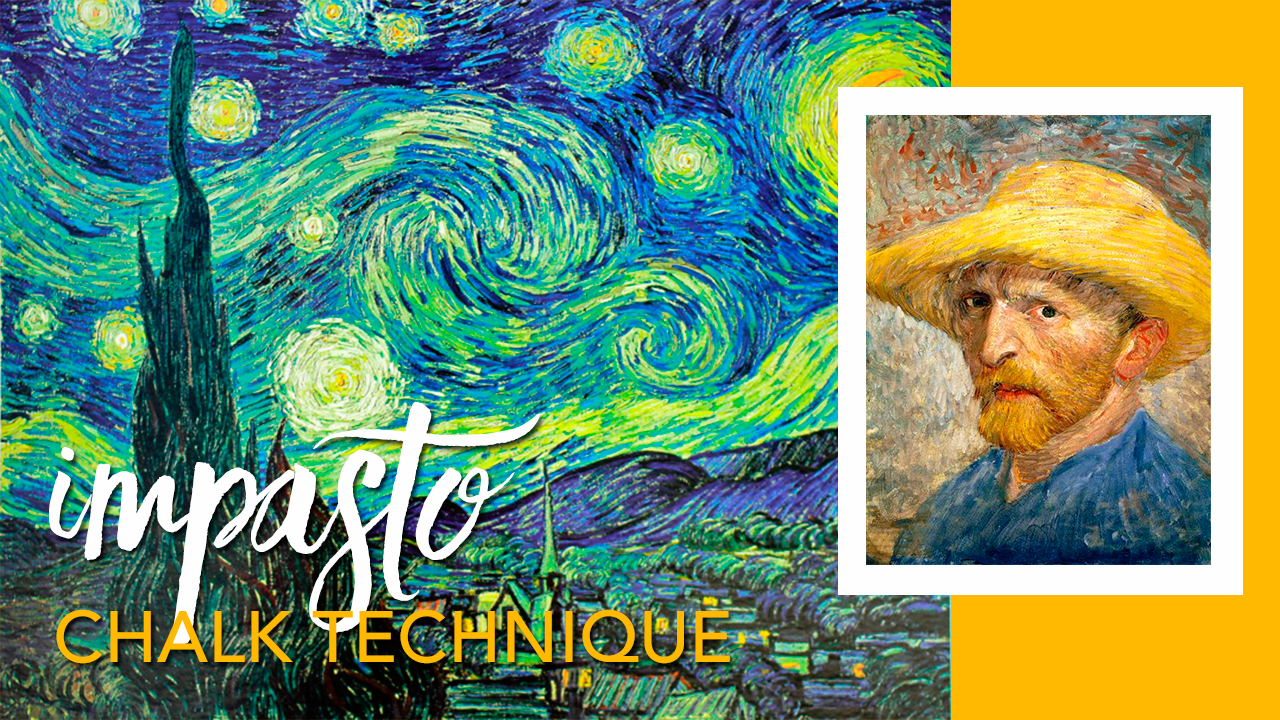
Van Gogh’s “Wheat Fields with Cypresses” is one of my favorite paintings. There is a distinct separation between the foreground, middleground and background, making it a perfect example for a landscape lesson.
What You’ll Need:
I used 3 pieces of paper for this project: 12″ x 18″ white paper, 8″ x 18″ blue or purple paper and a strip of brown paper (approx. 4″ x 18″).The technique is a little wacky (chalk pastel dipped in tempera paint) but really fun for the kids.
The Landscape
I overheard one girl say that this was her favorite project all year. There is something about working with paint and chalk; you just have to give in to the messy, sticky nature and enjoy the process.
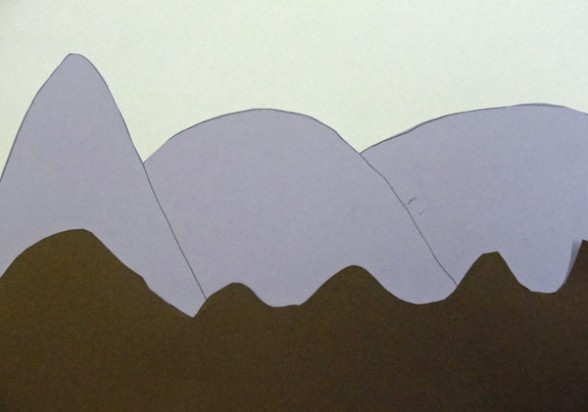
Using a pencil, draw a curvy line on the brown paper to represent the foreground. Do the same for on the purple paper for the hills/mountains. Cut both out.
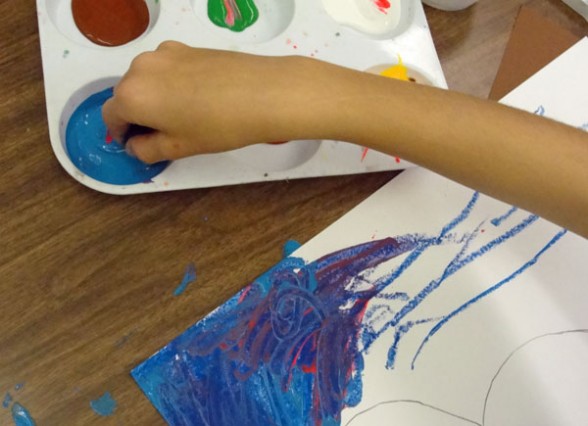
Starting with the sky, dip chalk into either white or colored tempera paint to create swirling lines. Only paint until the top of the “mountain” range.
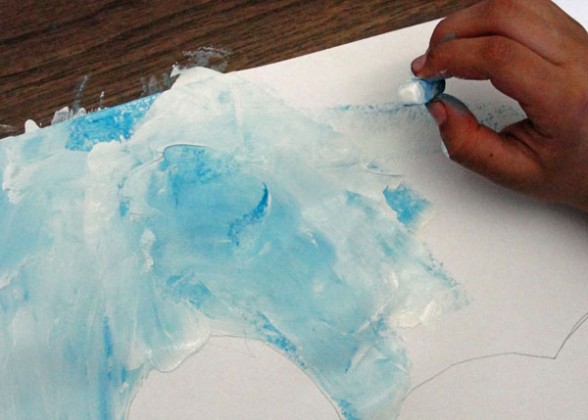
You can either use a colored piece of chalk dipped into white tempera, or white chalk dipped in colored tempera. Either works fine. Some kids can’t resist the urge to dip their fingers into the mess. It looks great, so let them!
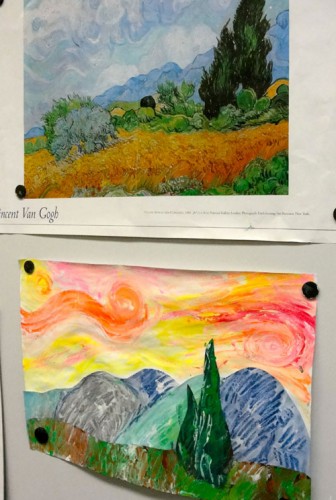
If you have a copy of “Wheat Fields with Cypresses” use it, but if not, any of his landscape paintings work well.
To add a cypress tree, use some of the darker paper scraps and cut out a shape resembling a cypress. Use the same technique as above to apply the dark green color. Glue onto foreground.
Fourth Grade Van Gogh Landscapes…
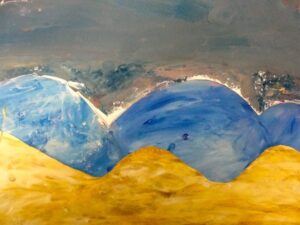
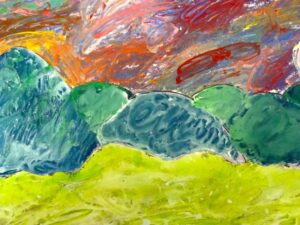
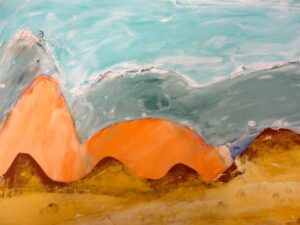
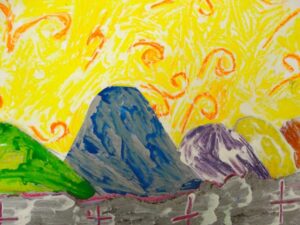
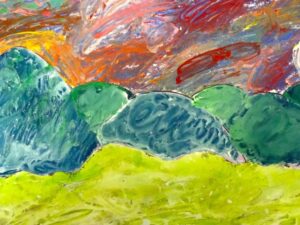
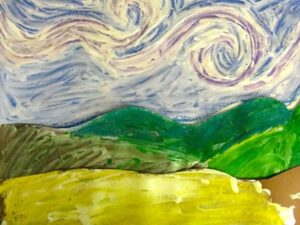
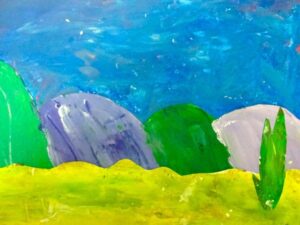
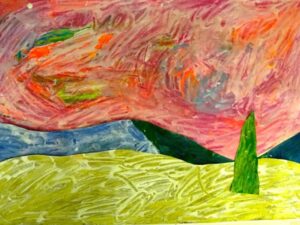
ARE YOU A SPARKLER? Access over 300 art lessons, videos, resources & trainings for one low monthly fee.

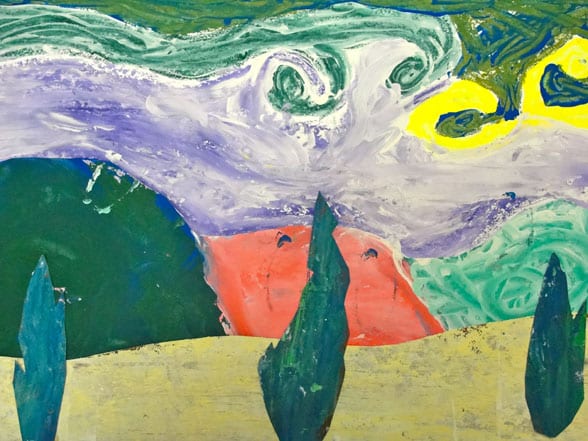





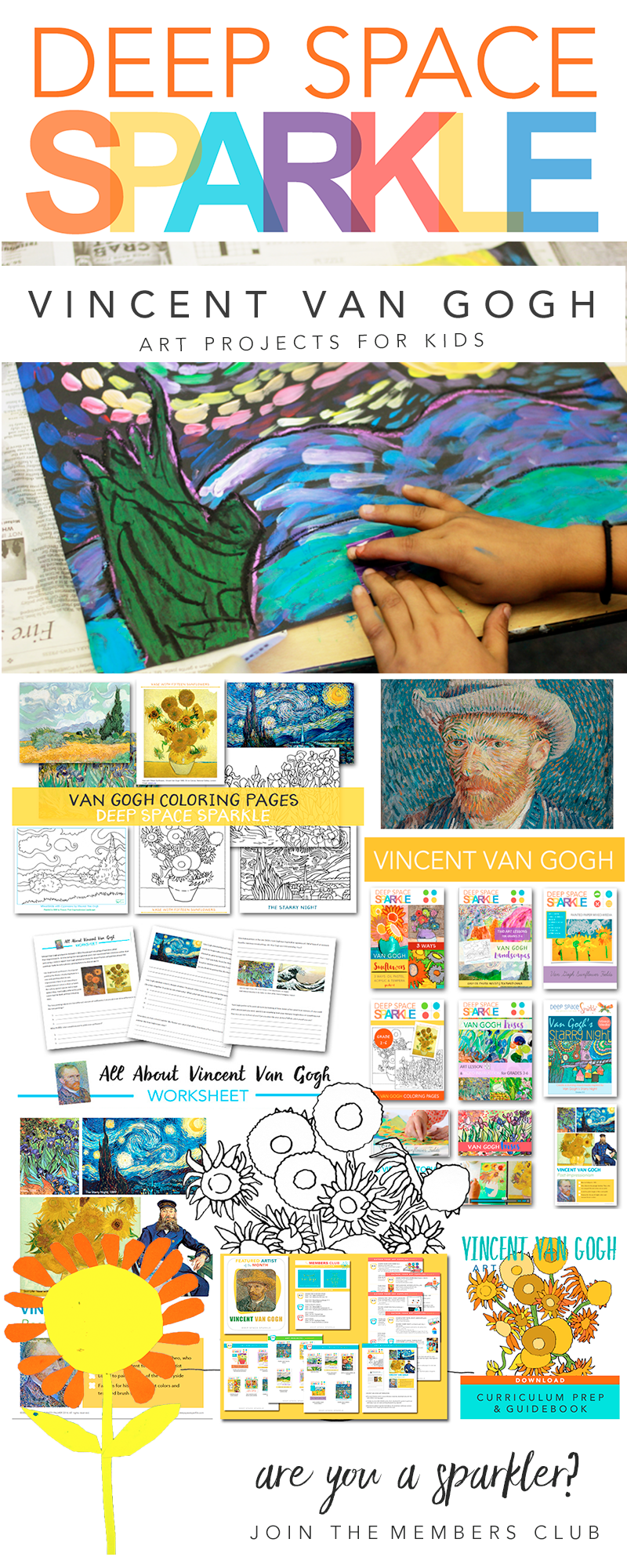






Patty! This is ingenious! I’m totally going to have to try this! So clever!
Do they wipe off chalk in between colors or just let the colors mix?
Hi Charlene,
The chalk and the paint mix together to form a paste. It’s meant to stay on the work to give it texture.
Hey Patty,
You mentioned chalk pastel at the first, but then just said, “coloured chalk” and “white chalk”. Will ordinary chalk work? Is there leftover chalk? You said they mix together to form a paste, and meant to stay on the work to give it texture. In other words, once you use a piece of chalk, it cannot be used for another part of the picture, let alone another project? It looks great! Been wanting to do a Van Gogh. This just might be it! Thanks for your very great blog!
Eleanor
Hmmm….some confusion here. Use chalk pastels. They come in a variety of colors, including white. Regular board chalk might work but it may not be as vibrant (the colored pieces). Dip chalk pastel into white or colored paint while holding onto the end of the pastel. Like a paintbrush. The chalk and pastel will form a paste when you mix the two onto the paper. Give it a try and experiment a bit. It’s really fun and tactile. Oh and yes, you can use the paint encrusted chalk again, but the paint tends to harden. I use all of my old chalk bits for this type of project.
That’s great. Thanks, Patty! I will try it!
Hey Patty,
I love Van Gogh’s “Wheat Fields with Cypresses” – I recently stumbled across it whilst trawling through google’s new art site and immediately fell in love with it! Thanks for providing such a great activity to bring it to life in the classroom. 🙂
One question I have about this activity is to ask how you added the trees… Did they create them on another piece of paper and paste them on top, or did they paint/draw them on like the rest of the picture?
Thanks again for your wonderful ideas and tips that are PRICELESS to a newbie art teacher. 🙂
Jemimah
Good question! I suppose I forgot about the cypress trees…simply cut an extra piece of foreground (brown) paper into the shape of a tree. Glue down. The kids used the scrap brown paper available after cutting out the foreground shape.
Love your Van Gogh lessons!
Started this today with my 1st graders. Kids that made their skit more blue look great but kids you wanted more of the sun/sunrise/sunset sky didn’t blend as well and looks very one color and bright. Any suggestions on how to tone it down?
I have incorporated Mr. Vangogh’s art into my elementary curriculumn for years, always looking for fresh ideas! Thank-you for this twist on yet another lesson.
Your blog has been a “go to ” site for me all year !!
thanks Patty
~karen
Love this! I did a swirly movement Vangogh landscape with my kids.. They love starry night!
I used forks thou in my lesson!
Hi! I’m getting ready to do the lesson but am not quite sure WHEN to glue the mountains and hills on the white paper… looks like they’re glued down AFTER they’re painted separately… Thanks!! Love your lessons!
Yes. That’s exactly it. The first layer/background or sky is completed first, then the middle section is colored separately then glued. Finally the foreground is colored then glued down. Add trees last.
Thanks so much for your quick response and thanks for all your hard work! Much appreciated! Randye
Hi. I love your site and so many projects. We’ve tried a few and have been very happy with your ideas and instruction. Regarding this project though, I have a few questions. First, would it be okay to use cardstock to glue down on the 12×18 paper (I bought watercolor paper)? I can’t find any 12×18 colored paper so I thought I may need something with weight to paint on, which is why I chose colored cardstock. Would regular paper or even construction paper be okay for the purpose of this project, specifically for the blue, purple, brown and green to go on top of the 12×18 watercolor paper?
Thanks for all the great ideas! 🙂
Just wanted to say that my 4th and 5th grade art class started on this today and I was so happy with how much they loved it. They were nervous about the chalk pastels at first (worried about breaking, etc.) but eventually got the hang of it. A few of them ended up using their hands to swirl the paint! Thanks so much for sharing the lesson. 🙂
Re: Hands swirling paint. I know exactly what you mean. Many of my students did as well. It;’s really a far more efficient way to paint!
Hi Patty,
I studied art and art education in college and I’m currently in South Korea teaching english to little kids! My boss noticed I was experience in art so she’s letting me run my own art class, which is an amazing opportunity. Your lessons and blog have been helpful giving me some guidance. I was wondering what sulphite paper is. Is there any thing that can be a good substitute? There are lots of great art supply stores here but thus far I haven’t gotten to go with my boss to pick out the supplies I need. I just give her a list. Thanks!
Hi!
Sulphite paper or construction paper is paper that has been processed to remove the lignin. It is a smoot, white drawing paper that is great for many mediums and especially good for kid’s art. In my Teaching Art 101 e-course, I have had the opportunity to work with art teachers from many countries and most say that sulphite paper can be found in office supplies stores. Just make sure it is around 70 lbs and if you aren’t sure, give it a try first.
Don’t confused it for construction paper that can be found in kid’s craft aisles. It’s a bit more refined.
Hope this helps!
Deep Sparkle is the most amazing. creative web site. Thanks for your varied and creative ideas.
Very nice lessons
Hi! I want to do this with my 5th/6th grade classes but I am confused about the order/steps. Is there anyway you can show more steps or explain the process? They cut out the 2 background pieces and then do what? When/where do the pieces get glued? Thanks so much!
I actually purchased from you some lessons on van gogh Irises and have all the written bits but not access to videos instructions. Is there anyway I could retrieve my access.. it was a couple years ago and I might have used my personal email sreinc22@aol .com
Hi Stephanie! For information regarding any purchases we recommend you email support@deepspacesparkle.com with your information and they will be able to look up your order and help you there.